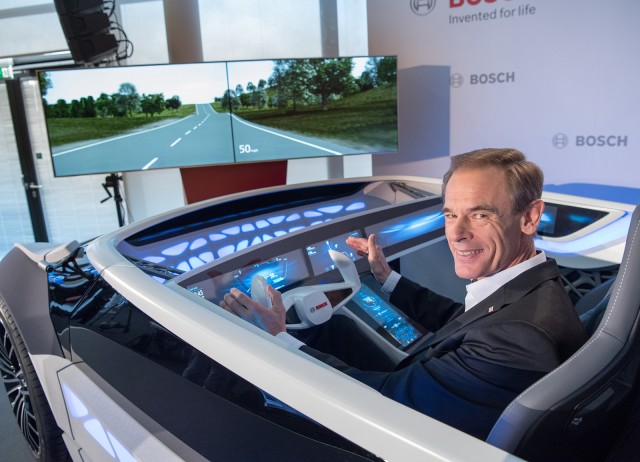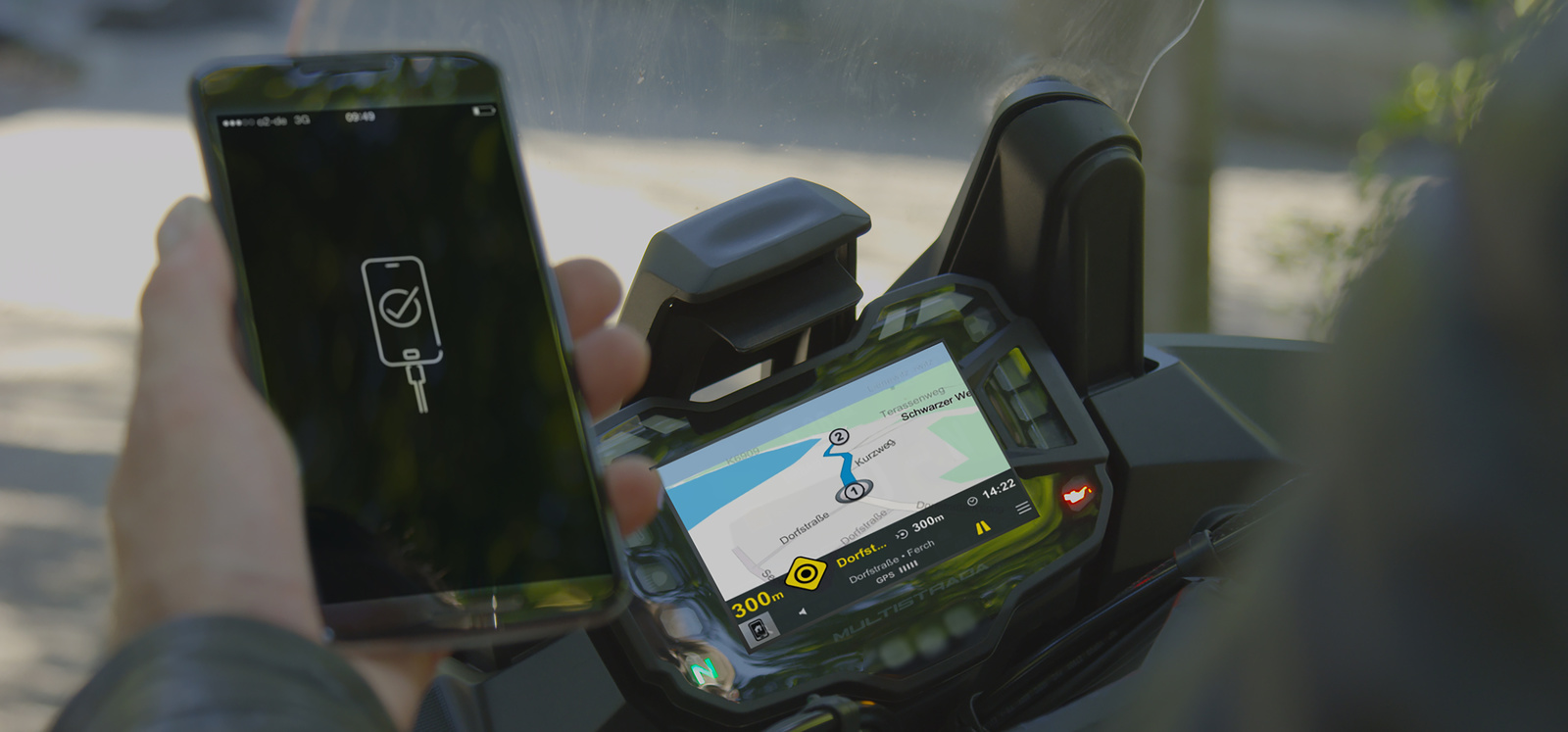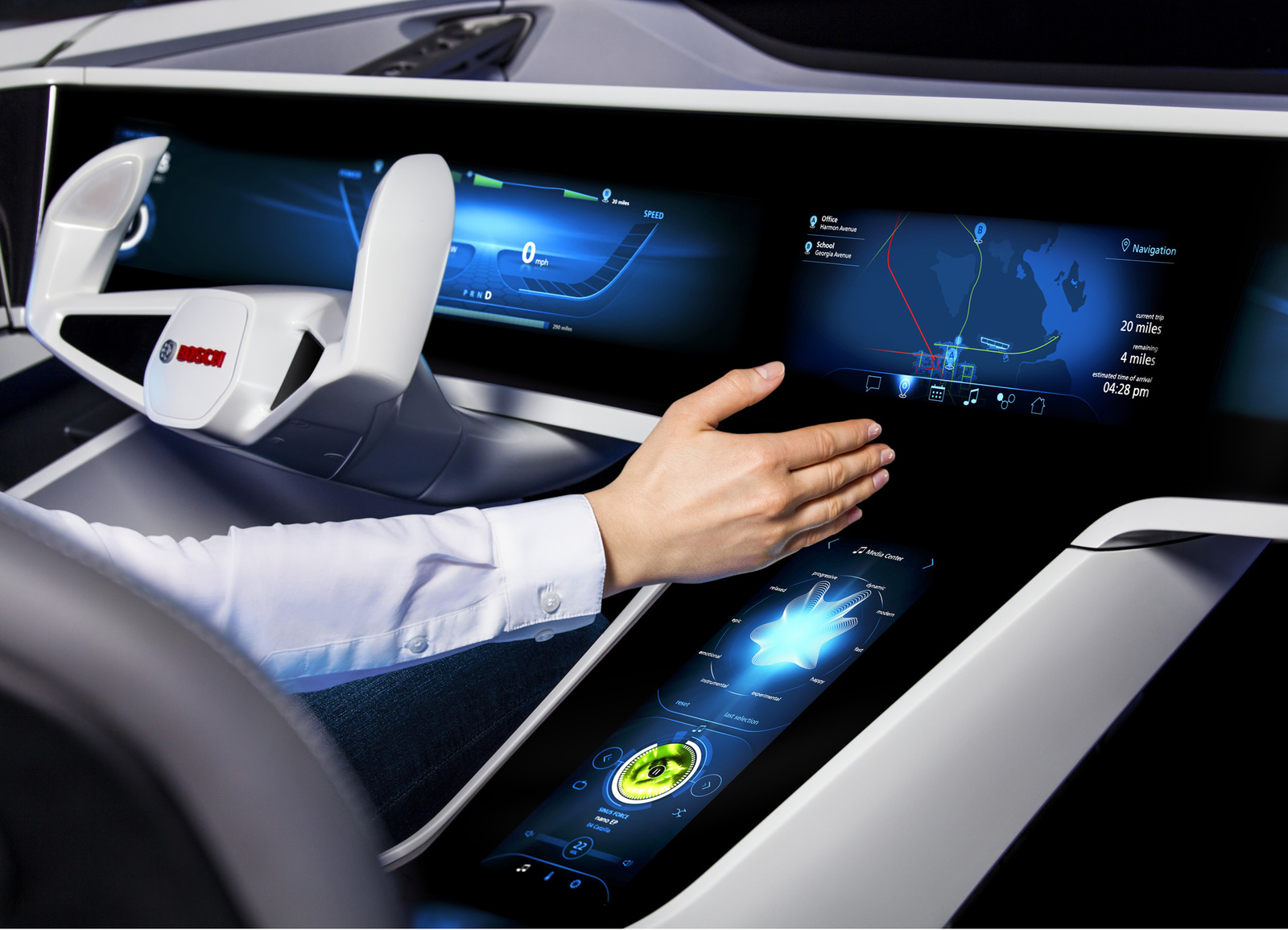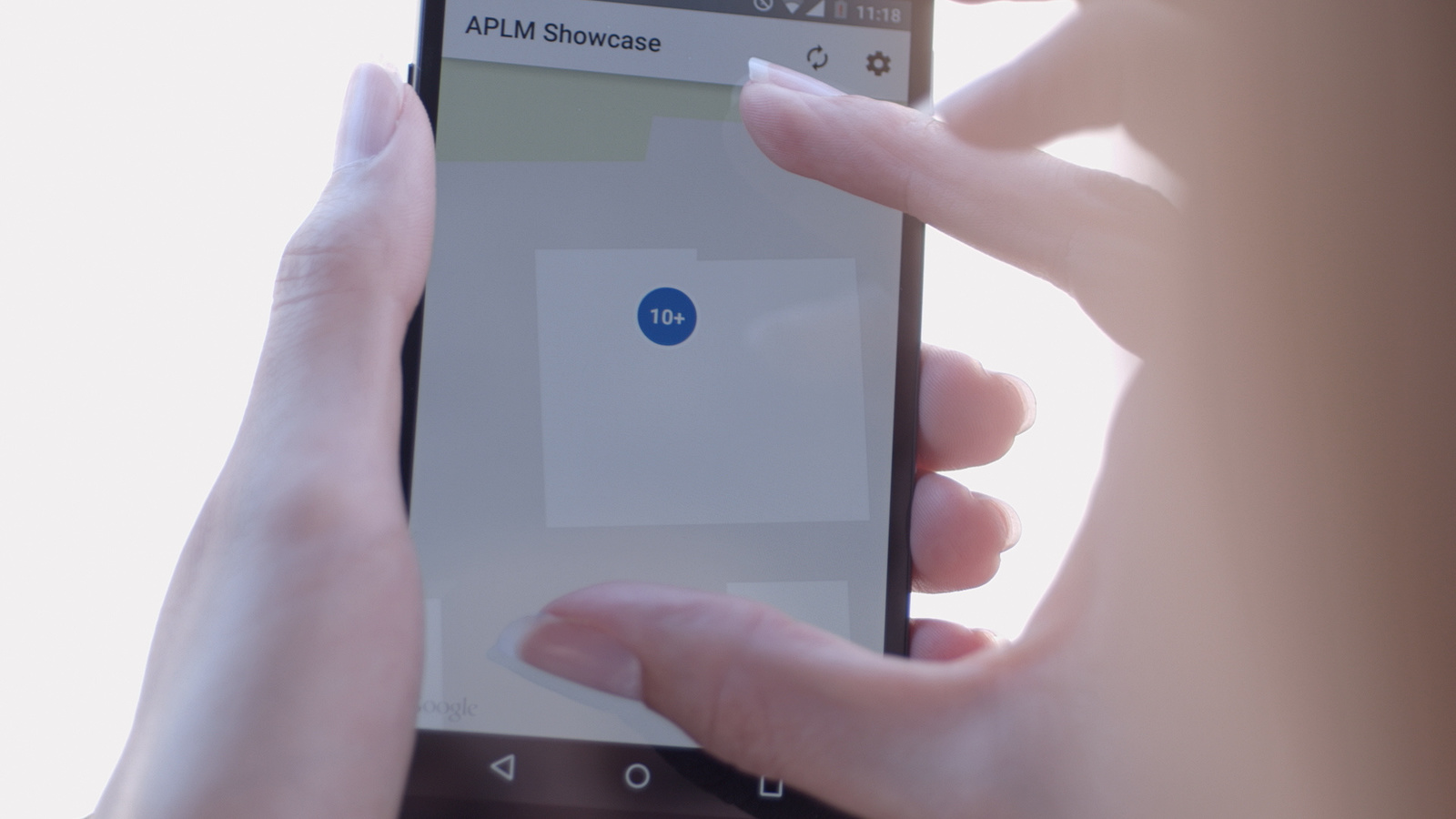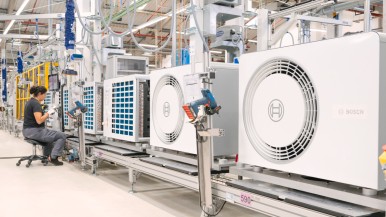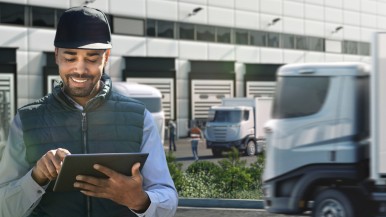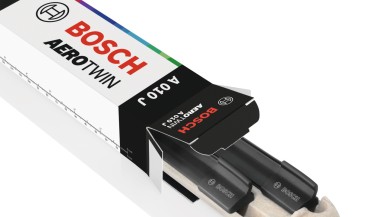A business trip to London in the not-too-distant future: just as the freeway exit for the airport comes into view, the mailman rings the doorbell at home. Not a problem, as long as the smart car is connected to the smart home. After a brief video chat with the mailman, the traveler gives a touchscreen command to open the front door. Next stop: the airport parking garage. The vehicle automatically takes over the job of finding a free spot while the traveler goes through security. After the plane has landed in London, the traveler’s smartphone reports “congestion on all access roads” and offers an alternative to a taxi: take the train to Regent’s Park, where an electric car has been reserved for the remainder of the journey.
This vision of a business trip in the age of connected mobility was presented by Dr. Volkmar Denner, chairman of the board of management of Robert Bosch GmbH, at the Automobilwoche Congress in Berlin. The Bosch CEO was addressing the industry-wide trend toward mobility services. Between 2017 and 2022 alone, the global market for connected mobility is expected to grow by nearly 25 percent annually. Just a few years from now, cars will be an active part of the internet of things (IoT), able to communicate with other connected modes of transportation, and even with the smart home. “The car as we know it will soon be history,” Denner said. “Today you use the internet to book a hotel room; in the future you’ll arrange your mobility online as well.” To do so, private vehicles will be part of an integrated solution that includes public transportation and even entire urban infrastructures. “In a few years, mobility will be seamlessly connected,” Denner said. People today still think in terms of their own individual vehicles, but the next few years will see their focus shift toward the most convenient way to reach their destination. Denner outlined the three development stages required to make this happen:
First: connectivity begins behind the wheel
Even today, virtually all new cars sold in Germany today are web-enabled. Real-time traffic data, the eCall emergency call service, and music streaming all require internet access. Bosch is making connected driving possible in two ways. First, by integrating smartphones in a way that apps can be operated safely while at the wheel. And second, by installing communication boxes. As a result, drivers of connected vehicles can use their infotainment systems to stream both real-time data and entertainment content.
But thanks to this internet connection, the car of the future will be able to do much more than stream music – it will become the driver’s personal assistant. As the degree of automation increases, drivers can become passengers whenever they want. “Alongside the home and the office, the car will become the third living environment,” Denner says.
Second: mobility will be seamlessly connected beyond the car
Connectivity extends far beyond the hood: it is also gaining ground in public transportation and car-sharing services. Bosch is already offering a glimpse of the future of mobility as part of the Stuttgart Services project. The supplier of technology and services provides a software solution that connects various modes of transport. Thanks to this software, one chip card is all that is needed for car-sharing, bike-sharing, train and bus travel, as well as for admission to amenities such as swimming pools or libraries.
“Our mobility solutions go beyond automotive technology,” Denner said. A seamlessly connected mobility assistant has even more potential: as part of the moveBW project, Bosch will create a mobility assistant that makes it possible for drivers in the Greater Stuttgart area to plan their route using different modes of transport, including switching to bikes, trains, and buses. What makes this project special is that a single app is enough to plan, book, and pay for travel involving different means of transport.
Third: the internet of things is bringing together mobility, smart homes, and smart cities
For Denner, however, connectivity is about much more than getting from A to B. “We’re not just redefining mobility, we’re also connecting people’s living environments,” he said. If cars are connected via the cloud to the smart home, or even the smart city, Denner sees added benefit for everyone. “Bosch is making sure that mobility and smart services blend seamlessly. We’re not just offering people the best way to reach their destination. Through connectivity, we’re also freeing up time,” Denner said. Take parcel deliveries, for example: going away will no longer mean missing a delivery. In the future, being connected to the smart home will mean that people can have a quick video chat with the mailman and take delivery of a package even if they are on the train or in their car.
For Bosch, this makes the internet of things a trend that reaches far beyond its Mobility Solutions business sector: Bosch is one of a mere handful of companies that can offer sensors, software, services, and its own IoT cloud to deliver the internet of things from a single source. “Bosch is already well positioned in all key aspects of the internet of things, and will continue to drive this trend forward,” Denner concluded.
